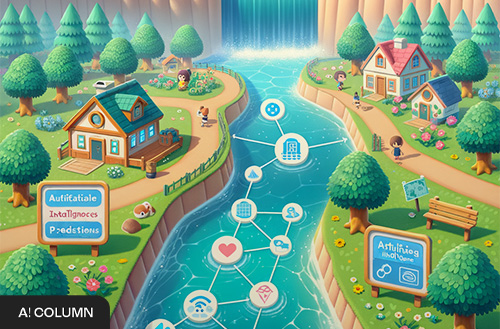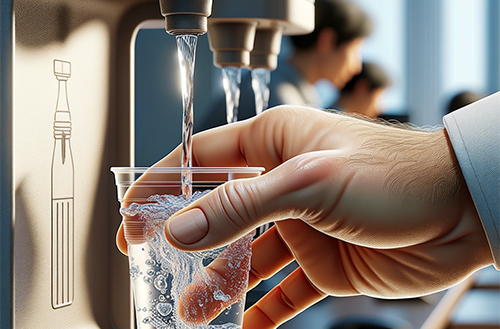

-
-
- 메일 공유
-
https://stories.amorepacific.com/en/amorepacific-when-choosing-our-swimsuits
When Choosing Our Swimsuits
On the Value of Water #5

Columnist
Sun-jin Ha Sustainability Management Center

#INTRO
As the sweltering summer wanes, we find ourselves transitioning through autumn, gazing toward the approaching winter. Many likely sought refuge from the heat this summer by visiting beaches or valleys ideal for water activities. By year’s end, some may escape to warmer locales, enjoying swims in resort pools or snorkeling in crystal-clear waters. Essential items such as swimsuits and life jackets become indispensable in preparing for these aquatic pleasures. While the allure of the latest swimwear trends and the captivating patterns or characters on life jackets may reflect personal tastes, safety demands the paramount consideration of one critical factor above all: color.
1 Certain Colors Stand Out Remarkably Underwater

Source: Royal National Lifeboat Institution
Comparison of Life Jackets from the 1890s and 1974. Initially crafted from cork, they featured a natural beige hue. Later, the material shifted to synthetic foam, and the colors became more vibrant.
Life jackets, our steadfast protectors during the summer months, began to see significant development in the 19th century. Early models primarily utilized cork or buoyant wood, materials that provided necessary flotation. However, with the advancement of the maritime industry and a rise in marine accidents in the early 20th century, there was a concerted effort to research and enhance the design and coloration of life jackets. These initial life jackets were typically a natural beige, blending too seamlessly with their aquatic surroundings and making it challenging for rescue teams to spot survivors in distress. To address this issue, diverse colors were tested in the early 1900s to improve the efficiency of marine rescue operations. The results unequivocally favored fluorescent orange for its superior visibility, leading to its establishment as the standard color for life jackets.
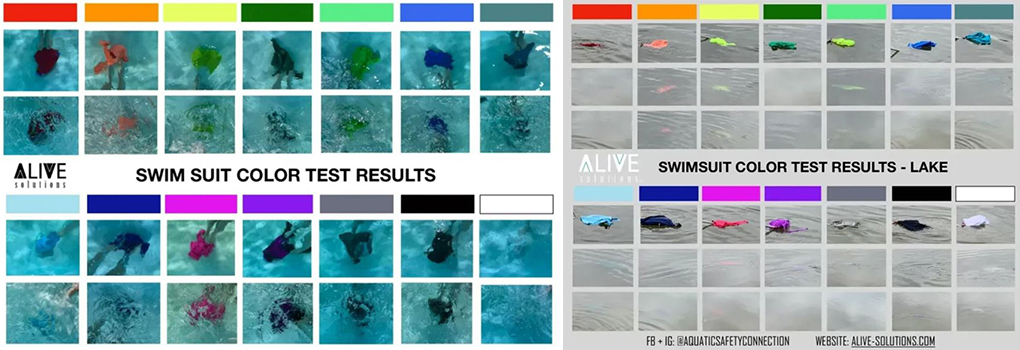
Source: ALIVE Solutions
Comparison of Swimsuit Colors in Indoor Pools and Lakes
Fluorescent hues are exceptionally conspicuous due to their high reflectivity. In particular, fluorescent oranges, even underwater, maintain a reflectivity rate exceeding 85%. This is akin to a bicycle equipped with reflective tape, which is easily noticeable from afar when illuminated at night. In contrast, more subdued colors such as blue or black are not recommended for swimsuits or life jackets. Darker shades tend to blend with backgrounds like rocks, diminishing visibility. Whites and light blues are the least advisable, as they are scarcely visible both in indoor pools and outdoor lakes.
2 The Myth That Drinking More Water Improves Skin
We have been told to drink water frequently since childhood. On TV and YouTube, the habit of drinking water regularly is often presented as the secret to skincare. Water is touted as one of the essential elements for health and skin. Indeed, without water, we cannot survive. Water makes up most of our body and delivers vital nutrients to our cells. It also aids in regulating body temperature and transporting waste products. But is there scientific merit to the claim that drinking more water improves skin? According to a YouTuber who conducted experiments and monitored the process, unfortunately, their skin deteriorated despite drinking more water than usual.(1)
1. This perspective is based on the views of some YouTubers who participated in the experiment, and individual results may vary.

Source: Newsweek
Skin Measurements After Drinking 2.7L Daily for Six Weeks (Right: After Six Weeks)
Leonie Helm experimented by drinking 2.7 liters of water daily for six weeks. Over time, she developed a routine for increased water intake and noted definite positive effects. She experienced relief from dry eyes and improved sleep quality. Therefore, she predicted that her skin would also improve. However, she was startled to learn that her skin age had increased by nine years. While her skin wrinkles slightly improved, her pores enlarged, and brown pigmentation and inflammation worsened. A medical specialist suggested that she likely experienced “dilution shock.” Significant changes in daily water intake can alter the concentrations of electrolytes, hormones, and other peptides, leading to physiological changes in the body. Although this is a temporary phenomenon and long-term benefits may emerge as the body adapts, it serves as a caution that excessive water consumption for the sake of skin care can result in adverse effects.
3 Invisible: The Virtual Water Footprint
If someone asked how much water was used to produce the 200ml bottle of orange juice in front of them, we might respond that it requires approximately 180-190ml, excluding the water content of the oranges and other additives. However, the reality is that water is consumed not only in watering the trees and harvesting the oranges but also in transporting them to manufacturing facilities and processing them into beverages. Moreover, water usage extends to transporting these beverages by plane or ship to our country and ultimately to the consumer. Although invisible to us, the water flow involved in cultivating, processing, and transporting these products is called “Virtual Water.” According to a 2005 study by Dutch researcher Hoekstra, the amount of virtual water required can vary somewhat depending on climate conditions and farming practices. On average, globally, producing a 200ml glass of orange juice necessitates 170 liters of virtual water, and manufacturing a 150g hamburger demands a staggering 2,400 liters.
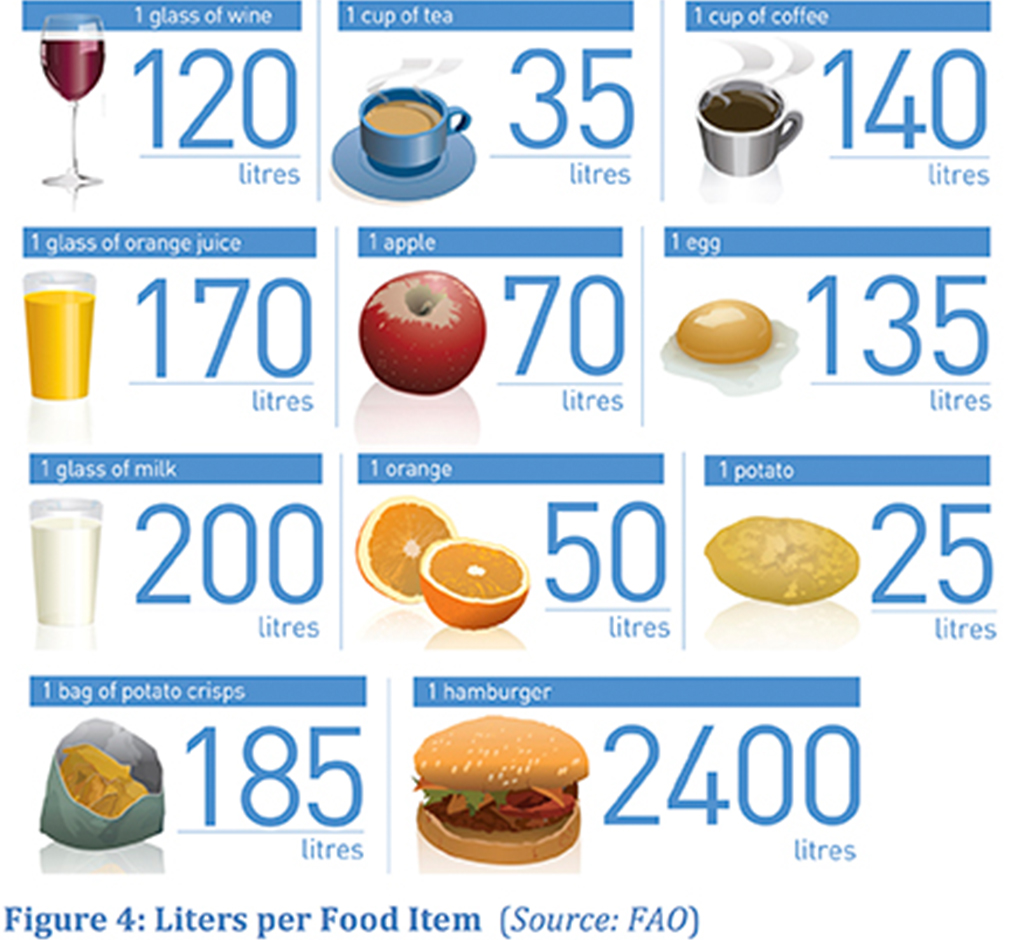
Virtual Water (Liters) by Food Type / Source: FAO
Closely related to virtual water is the concept of the “water footprint,” an indicator that measures not only the water required to produce products used in our daily lives but also the water consumed during their use and disposal. Did you know that water footprints are broadly categorized into green, blue, and gray water footprints? The green water footprint refers to the amount of water transferred from the soil to crops or tree fruits or the water from rainfall that evaporates into the atmosphere. The blue water footprint denotes the surface and groundwater used for product manufacturing or laundry. In contrast, the gray water footprint represents the volume of water needed to dilute pollutants to their original concentrations.
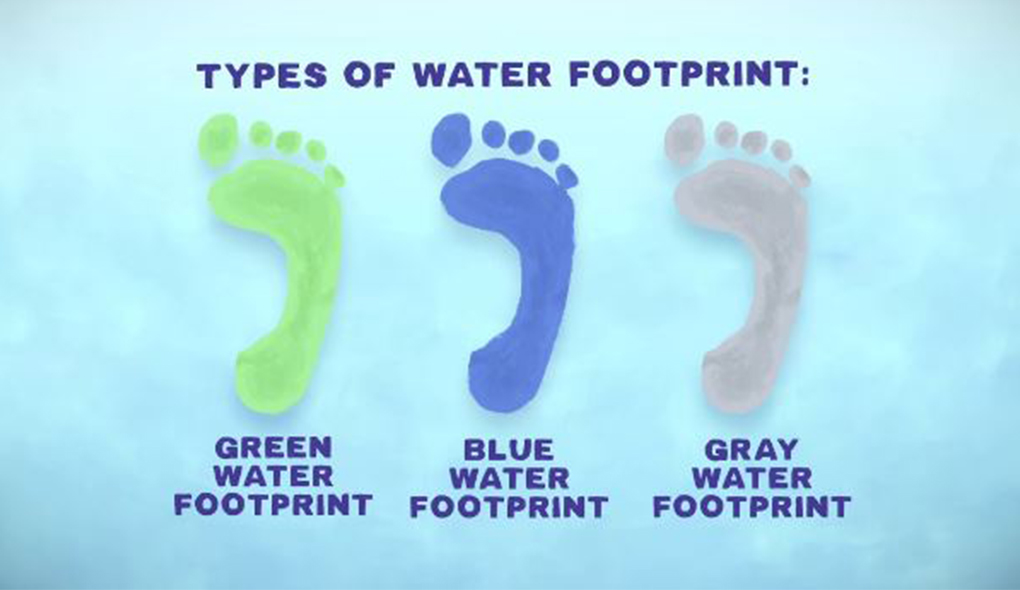
Water Footprint Classification
Source: GIZ YouTube Channel
Examining the water footprint statistics reveals findings that are intriguingly different from standard assumptions. Vegetables require daily watering, and one might expect nuts to thrive effortlessly, even in arid soils. Contrary to these expectations, vegetables possess a relatively smaller water footprint than other agricultural products, while nuts exhibit a significantly larger water footprint among crops. This discrepancy arises because we consider only the unit weight of the final product—the seeds—we consume.
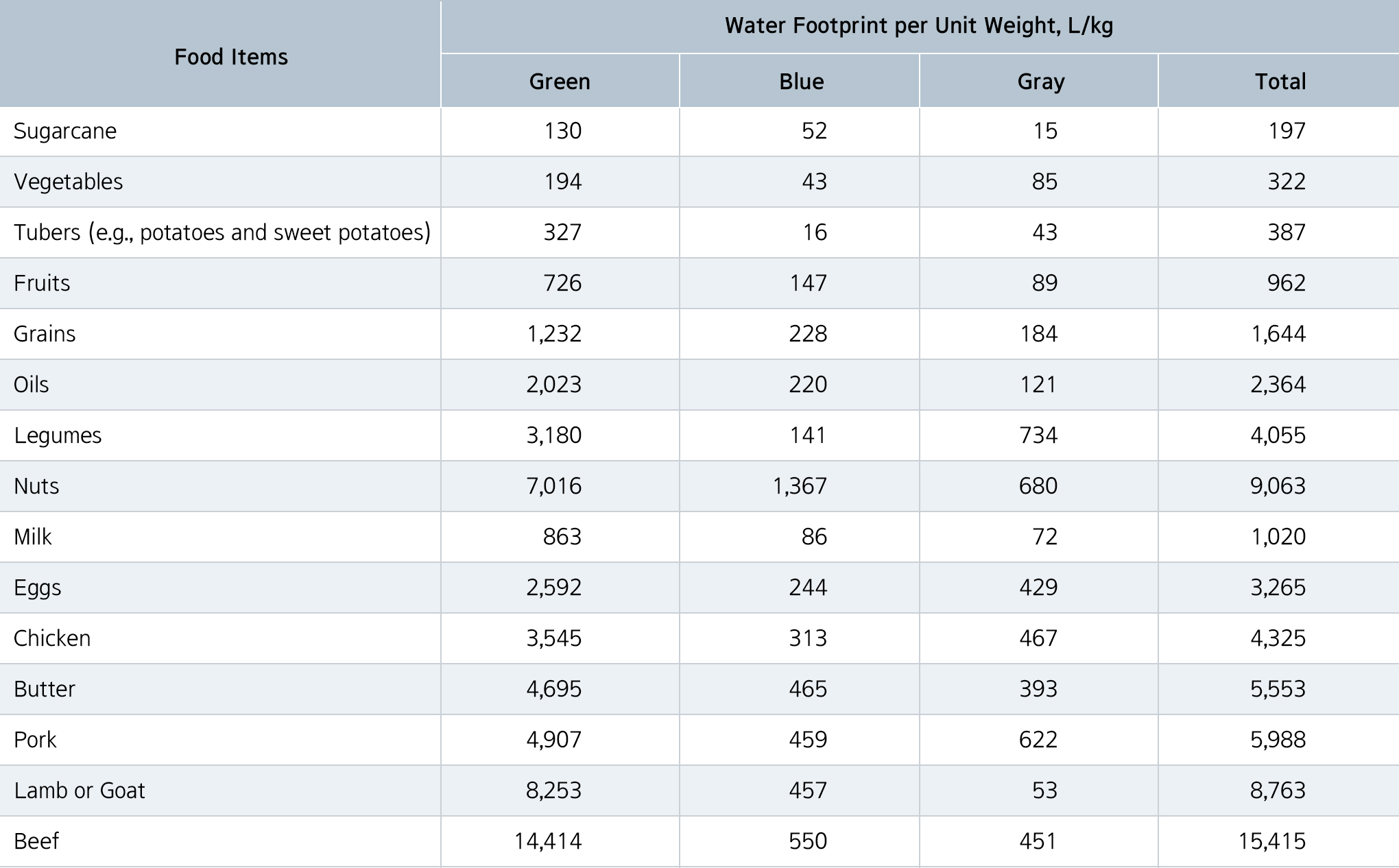
Water Footprint per Unit Weight of Livestock and Animal Products
Source: "Concept and Calculation of Water Footprint," Professor Seung-hwan Yoo
Measuring these water footprints necessitates a stringent evaluation process that adheres to global standards. To meet these requirements, it is imperative to meticulously collect diverse data, including water usage, across all stages—from raw material acquisition to manufacturing, distribution, usage, and disposal. Amorepacific's brand, LANEIGE, has notably focused on this aspect of water footprint. LANEIGE measured the water footprint of its Water Bank Blue Hyaluronic products and secured certification for reducing the water footprint of its creams and serums from Carbon Trust, a global certification body based in the United Kingdom. From a corporate standpoint, possessing precise data aids in preventing water wastage, while consumers benefit by verifying the outcomes of water resource usage. This makes it a meaningful endeavor for both businesses and consumers.
#OUTRO
Following discussions on investments, marketing, climate change, and AI related to water, in this final installment, we explore everyday water narratives that are both practical and insightful. Uncovering the boundless potential of “water,” one of our most ubiquitous resources, has been a journey. We hope this exploration has provided a "different perspective" on water, highlighting its integral role in our health and daily lives, corporate environments, and technological advancements. Thank you.
-
Like
1 -
Recommend
0 -
Thumbs up
0 -
Supporting
0 -
Want follow-up article
0




